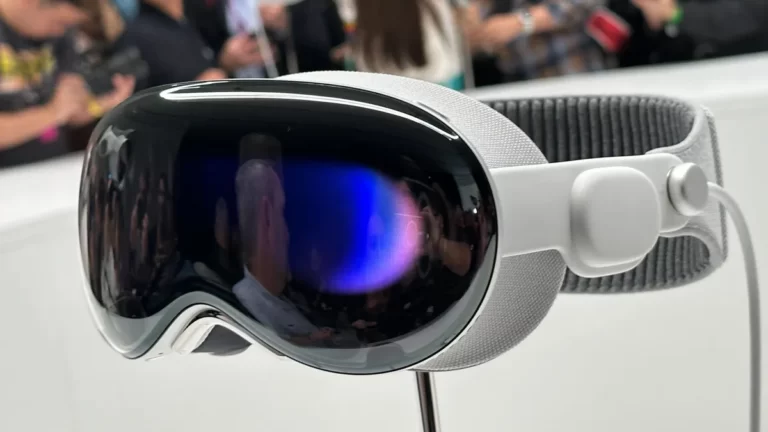Apple announced the Vision Pro as part of its WWDC keynote presentation. This product is the brand’s first augmented reality (AR) headset.
The original AR release, the Oculus Rift, had a single 1280×800 display.
This technology has improved dramatically since then, with the Vision Pro offering micro-OLED displays with 23 million pixels. That gives it nearly three times more than what you get with a 4K monitor or television.
Although the quality is impressive, Vision Pro’s price limits its market. The headset’s MSRP is $3,499.
Apple Uses Three Displays on the Vision Pro Headset
The Vision Pro design creates three displays. First, the two 1.41-inch micro-OLEDs on the inside are unique for the AR product industry. Then the three-element lens and optical system deliver a pixel-density approach that offers something unlike anything people have ever experienced before.
Each pixel’s size (7.5 micrometers) is comparable to that of a human red blood cell.
Apple has yet to offer many specifics about Vision Pro, but it is the highest-resolution product of its type on the market.
The resolution doesn’t tell the entire story. Although Apple hasn’t released what the field of vision is for the Vision Pro, those who have tried it say the experience is competitive with other headsets. That puts it somewhere between 100 to 120 degrees, placing the set’s pixels-per-degree rating at 50 to 70.
This design aims to eliminate pixel detection for users, ensuring the AR experience feels seamless and natural.
Other Products Use a Significantly Lower Pixel Density
The Varjo VR-3 is likely the closest product on the market right now that compares to what Vision Pro can do. It came out in 2021, retails for $3,645, and achieves a pixels-per-degree rating of 70 with a bionic display that uses a hi-res focus area with peripheral displays that achieve a 30 rating.
Most AR headsets don’t come close to those specifications. The Microsoft HoloLens 2 offers a disputed 47 rating, while Meta’s Quest Pro is at 22. HTC’s Vive XR Elite is only 19.
The issue with this pixel count rating for Vision Pro involves graphics performance. Rendering an image with quality levels that high increases power needs and generates heat.
Each Vision Pro set ships with Apple’s M2 chip, which includes the GPU, CPU, and AI accelerators to drive the display and handle the computation power. That makes it a self-contained computer, and the rendering problem is managed with the new R1 chip to handle the processing inputs from cameras.
Although many audiences are interested in augmented reality for shopping, gaming, and virtual experiences, Apple is not looking at the metaverse for the Vision Pro. Their presentation focused on productivity, photography, video calls, and AR entertainment. That means users must be able to interact with virtual and real items simultaneously.
If the Vision Pro delivers with its realism, it will create numerous opportunities for us to experience the next level of AR. A better viewing experience leads to less strain, which means the headset should be usable for a longer time.
